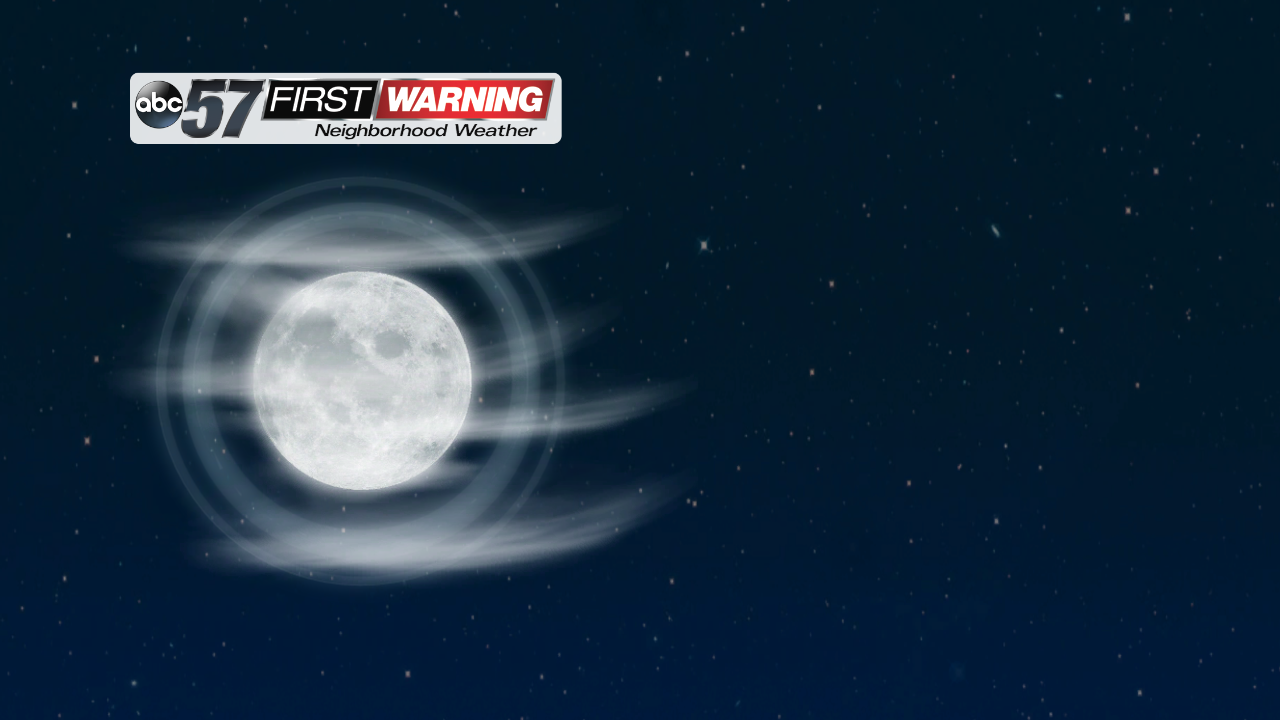What is a 22 degree halo?

-
4:33

President Trump gives address to nation
-
2:30

Elkhart schools superintendent to leave for Illinois district...
-
0:52

Annual Blasko Family Christmas lighting final holiday season
-
1:15

Free meals being distributed in South Bend this holiday season
-
3:18

Elkhart woman creates GoFundMe to pay off student lunch debt...
-
4:08

South Bend Community Police Review Board hopeful to be productive...
-
2:42

Detroit Pistons dunk team brings holiday pep rally and a message...
-
1:54

Rainy, windy, then temperature crash
-
2:38

Lincoln Charter Township Fire Department looks to expand, lower...
-
1:20

The season’s most common illness and preventative steps you...
-
2:26

Varner’s Greenhouse and Nursery brings bursts of color to the...
-
5:55

Straight No Chaser Christmas tour comes to The Morris
There's a pretty cool phenomenon that can occur when high, thin clouds interact with our moon. On mostly clear nights when the moon is most visible in the sky, sometimes there is a halo that appears around the moon. This is caused by a sheet of high, thin clouds called cirrostratus clouds. Ice crystals suspended in the cloud refract the moon's light on its way to our eyes, making it appear as a ring or halo.
 High, thin cirrus clouds create the illusion of rings around the moon the light bends through the clouds.
High, thin cirrus clouds create the illusion of rings around the moon the light bends through the clouds.
In the old days, it was referred to as a sign or omen that bad weather is on the way. This can be true at times but it doesn't always work out that way. High, thin clouds often are out ahead of an incoming low pressure system with rain, but they can form in other ways as well.
There's even a chance we could see one tonight! The moon sets around 1 AM Thursday morning so be sure to look up at the sky tonight, towards the west as the moon sets. You might be able to see some cirrostratus clouds moving in front of the moon, creating that halo effect.

